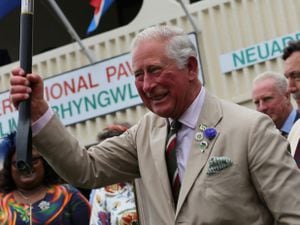4,000 badgers killed in Shropshire cull, figures reveal
More than 4,300 badgers were killed in Shropshire during the autumn cull of 2021, official figures reveal.

The Department for Environment, Food & Rural Affairs is carrying out a highly controversial cull of the animals in a bid to eradicate TB in cattle.
Appalled campaigners with the Shropshire Badger Group contest the reasons for the cull and the fact that the majority of the animals were shot and not killed with the more humane cage and trap method.
Jim Ashley, chairman of Shropshire Badger Group, said: "The outlook looks bleak for badgers with the Government still dragging its heels in developing the much needed bovine TB vaccine for cattle and an obstinate refusal to re-examine what we believe to be the flawed policies which pin the blame for bovine TB in cattle on badgers."
The figures show that the cull was carried out in three areas of the county, codenamed areas 50, 55 and 60. Of the total number of 4,316 culled, some 3,664 were shot, and 652 by cage-trapping.
Shropshire Badger Group fears that more than 70 per cent of the badger population has been killed over the last two years.
Referring to official figures released by Whitehall recently, the group says it is appalled to learn that the vast majority of the animals were shot.
A spokesperson for the group objected to the Government figures showing that the shooting part of the cull was humane because only 0.255 per cent of badgers shot were monitored. And they said "none were sent for post mortem or testing for bovine TB".
"The proportion shot while free running rather than hit a record of nearly 9 out of 10, despite calls to stop this inhumane method that can leave injured badgers to die slow deaths," said the spokesperson.
The badger cull is set to run to at least 2025, and with supplementary cull licences is likely to continue for some years after that.
Peter Hambly, CEO of the Badger Trust said: "We fundamentally challenge the need to kill badgers when the science consistently fails to pinpoint them as a significant factor in transmission of this terrible disease in cattle.
"The Government would do well to put more time and effort into more effective and rigorous cattle testing, bringing a cattle vaccine to market and focusing on other effective cattle measures, once and for all dealing with this terrible problem for animals, farmers and taxpayers alike.
"The present policy of focusing on the badger ignores the science, is inhumane and unethical, and wastes taxpayer money at a time of tight family budgets. If the Government truly wants to eradicate bovine TB, focus on the cattle, not the badger."
Mr Hambly added: "The number of badgers unnecessarily slaughtered every year accounts now for over 35 per cent of the estimated badger population in England and Wales, whilst the percentage of cattle killed each year is less than 0.5 per cent.
"At this continued rate of persecution, the future survival of this species in this country is at serious risk. Some areas of England, such as parts of Gloucestershire and Devon, already report few or no badgers in areas where they once thrived."
Campaigners say the Government approach assigns badgers a major role in the transmission of bovine TB to cattle while it routinely ignores core issues of cattle movements and related farm biosecurity.
However, Defra defends the culling policy.
Dr Tim Hill, the chief scientist at Natural England, said: "The outcome of this year’s operations indicates that industry-led licensed badger control continues to deliver the level of effectiveness required by the policy to be confident of achieving disease control benefits."
He added: "Contractors continued to show high levels of discipline and compliance with the best practice guide. The level of accuracy of controlled shooting compares favourably with previous years and with other wildlife control activities."
Christine Middlemiss, the UK Chief Veterinary Officer, said that "all areas delivered sufficient levels of coverage and effort required to be confident of achieving disease control benefits, including Areas 55 to 61 which began culling in 2021".
She added: "One first year area (Area 55 – Shropshire) achieved their original minimum number of badgers to be removed on day 34 but finished operations marginally below their uplifted minimum number. As this area deployed sufficient effort and coverage, we concluded that the area had completed a successful cull."
Licences for areas 55 and 60, both in Shropshire "should continue for at least another year", she added.
"I anticipate that intensive culls, if they continue to be effective, will continue to see similar benefits of reduced disease incidence in cattle over their licence periods.
"Based on the monitoring activity provided by Natural England, my view remains that the likelihood of suffering in badgers culled by controlled shooting is broadly within the range of those reported for hunting or killing of other terrestrial mammals."
On September 7, 2021 Defra announced that as part of the Government’s 25-year strategy to eradicate bovine tuberculosis and protect the livelihoods of dairy and beef farmers, Natural England had licensed and authorised badger disease control operations across 40 areas in Avon, Berkshire, Cheshire, Cornwall, Cumbria, Derbyshire, Devon, Dorset, Gloucestershire, Hampshire, Herefordshire, Leicestershire, Lincolnshire, Oxfordshire, Shropshire, Somerset, Staffordshire, Warwickshire, Wiltshire, and Worcestershire.
Badger control operations, lasting at least six weeks, took place in each area between August 31 and November 2, 2021.
Defra concluded: "The results from 2021 indicate that all 40 badger control companies have delivered the level of badger removal required to be confident of disease control benefits and that the operations were carried out to a high standard of public safety."





